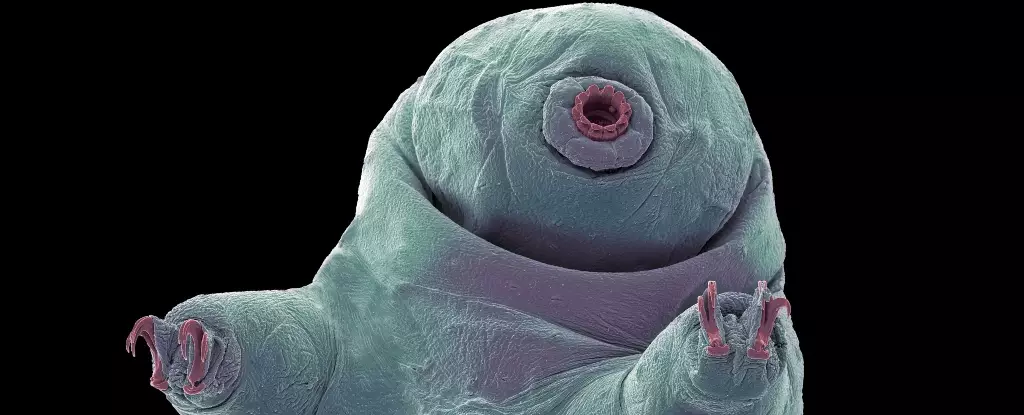The 2025 Lunar and Planetary Science Conference in The Woodlands, Texas, proved to be a rich tapestry of innovative ideas and scientific insights aimed at advancing human exploration of outer space. Held from March 10 to 14, this gathering drew the brightest minds in planetary science, motivating them to tackle critical questions about human existence beyond Earth. Notably, one of the conference’s focal points was how humanity can not only survive but thrive in the far reaches of extraterrestrial environments.
Among the standout presentations, researchers Isadora Arantes and Geancarlo Zanatta introduced a groundbreaking study illuminating the potential of tardigrades—microorganisms renowned for their remarkable durability in extreme conditions. Known colloquially as “water bears,” tardigrades have captivated scientists due to their ability to endure severe temperatures, desiccation, and even radiation levels that would obliterate most life forms. This research doesn’t merely advance the field of astrobiology; it opens windows to potential strategies that can safeguard human life during deep-space missions.
Tardigrades: Nature’s Incredible Survivors
The undying allure of tardigrades lies in their exceptional resilience. Proclaimed as one of the hardiest organisms on Earth, they can survive extreme conditions ranging from near absolute zero to intense heat, as well as overwhelming radiation and pressures beyond what humans can withstand. During the conference, the duo emphasized how the mechanics of tardigrade biology serve as a crucial model to hypothesize about the potential characteristics of life beyond our planet. Their exploration is indicative of how understanding Earth’s extremophiles could yield insights into extraterrestrial habitats championed by scientists such as those studying Mars and the icy moons of Europa and Titan.
A key component of the tardigrade’s survival strategy is a specialized protein known as Damage Suppressor (Dsup). This protein’s role in mitigating cellular damage from radiation exposure and maintaining genome integrity speaks volumes about the potential adaptability of life in harsh environments. Arantes and Zanatta used advanced molecular simulations to reveal how Dsup proteins operate. Their findings indicate that the protein effectively shields genetic material from radiation, preserving the genomic integrity necessary for life—a discovery that could inform how we develop protective measures for human cells in space.
Broader Applications of Extremophile Research
The implications of this research extend far beyond theoretical models of astrobiological significance. By exploring tardigrade resilience, Arantes and Zanatta ignited discussions on applications in biotechnology that could create pivotal stills as humanity strives for a presence in space. The adaptations that enable these organisms to resist extreme radiation, cold, and desiccation also provide potential pathways for enhancing human health. From improving radiation shielding methodologies in medical practices to developing genetically engineered crops that thrive in adverse climatic conditions, the possibilities seem boundless.
Moreover, the researchers have argued for an integrated approach—merging computational methodologies with experimental designs—to yield a deeper understanding of extremophiles. This holistic perspective is crucial for unlocking the mysteries of life in a universe that often seems inhospitable.
Future Possibilities: Expanding Our Horizons
The insights presented at the conference underscored that the study of extremophiles like tardigrades could serve as a fundamental blueprint for humanity’s ventures into the cosmos. As international space agencies prepare for missions to Mars and beyond, understanding how life can adapt to extreme conditions becomes paramount. The resilience observed in these microorganisms suggests that the characteristics necessary for survival could be more widespread than previously believed. Could life forms survive in environments with extreme heat, cold, or radiation beyond our own solar system? Arantes and Zanatta’s research raises intriguing questions that could guide future exploration and the search for life elsewhere.
Their findings also advocate for increased collaboration among disciplines. By combining expertise from molecular biology, astrobiology, and biotechnology, researchers can develop strategies that not only promise the survival of humanity in space but also enhance our capabilities to adapt and thrive in the ever-changing environments on Earth. In the quest to ensure humanity’s extended existence among the stars, nurturing and understanding the incredible resilience of Earth’s extremophiles may uncover solutions we have yet to imagine.

